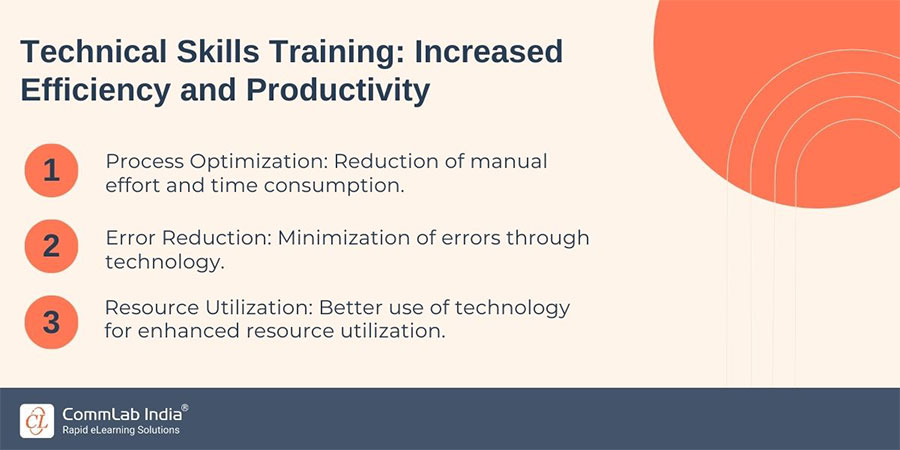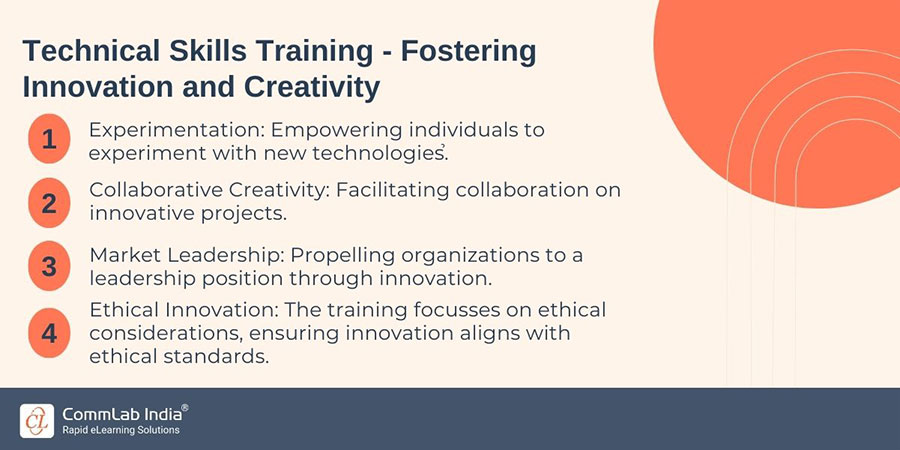8 Reasons Why Technical Skills Training is the Need of the Hour!
Wondering if you really need to invest in technical skills training? Yes you do! Read on to know why...

In the dynamic landscape of technology, the increasing demand for individuals equipped with pertinent technical skills is impossible to ignore. Technical skills training transcends contemporary trends; it stands as the key for effectively navigating the challenges of the present and drawing a path toward a prosperous future.
What is Technical Skills Training?
Technical skills training is the process of acquiring job-specific abilities essential for a particular profession, such as programming, machinery operation, or medical procedures. It involves a combination of theoretical knowledge and hands-on practice to ensure proficiency in using tools and technologies relevant to the industry.
As we are on the topic of technical skills training, here are eight compelling reasons why you need to invest in technical skills training -
Why is Technical Skills Training Important
1. Adaptability in a Dynamic Work Environment
The business world is in a state of constant flux, propelled by rapid technological advancements. Employees who possess technical skills are better equipped to adapt to these changes, ensuring that they remain invaluable assets to their organizations. Integrating innovative approaches such as video-based learning or custom eLearning in technical skills training fosters a mindset of adaptability, providing individuals with dynamic tools to thrive in ever-changing work environments. This blend of traditional skills and cutting-edge learning methods ensures a comprehensive approach to staying ahead in today's dynamic professional landscape.
The training helps them adapt to:
- Rapid Technological Advancements: Swift adaptation to new tools and methodologies.
- Continuous Learning Culture: Fostering an environment of perpetual skill enhancement.
- Competitive Edge: Quick response to market changes, maintaining competitiveness.
2. Increased Efficiency and Productivity
Technical skills training enhances efficiency by streamlining processes and automating routine tasks. Proficient individuals can leverage technology, incorporating innovative approaches like microlearning, to accomplish tasks more quickly and accurately, leading to increased productivity. Organizations that prioritize technical skills training often witness a substantial boost in overall operational efficiency, fostering a culture of continuous learning and adaptability.
The training helps with:

3. Bridge the Skills Gap
The rapid pace of technological innovation often results in a gap between the skills employees possess and the skills required by employers. Technical skills training serves as a bridge, allowing individuals to acquire the expertise needed to meet current industry demands. Closing the skills gap is essential for sustaining a competitive workforce.
The training helps fill gaps about:
- Industry Relevance: Ensuring continued relevance to evolving industry needs.
- Increased Employability: Enhancing job market appeal through in-demand skills.
- Innovation Potential: Contributing to innovation, driving organizational growth.
- Continuous Development: Bridging the skills gap involves ongoing learning to keep pace with industry changes.
4. Enhanced Problem-Solving Abilities
Technical skills training goes beyond the acquisition of specific tools and technologies; it cultivates critical thinking and problem-solving abilities. Proficient employees can handle work-related challenges utilizing their technical expertise, and incorporating engaging strategies like gamification amplifies their problem-solving skills. This skill set becomes particularly crucial in an ever-changing business landscape, where the ability to adapt and innovate is paramount for sustained success.
The training helps enhance:
- Analytical Thinking: Developing analytical skills for effective problem-solving.
- Innovative Approaches: Employing creative approaches to address challenges.
- Risk Mitigation: Efficient problem-solving contributing to risk mitigation.
- Cross-disciplinary Solutions: Technical skills enable individuals to approach problems from various perspectives, fostering comprehensive solutions.
5. Global Competitiveness
In a world where businesses are interconnected on a global scale, competitiveness is crucial. Countries and organizations that prioritize technical skills training position themselves as leaders in innovation and technology. A skilled workforce is an asset that propels nations and businesses to the forefront of global competition.
The training helps enhance:
- International Collaboration: Facilitating global collaboration and partnerships.
- Market Expansion: Better positioning for market expansion and international opportunities.
- Attracting Talent: Drawing top talent by being recognized for technical prowess.
- Cultural Sensitivity: Global competitiveness requires a workforce versed in cultural nuances, achievable through diverse technical training.
→ Download Now: Virtual Instructor-led Training – A Beginner’s Guide [eBook]
6. Facilitates Career Advancement
Technical skills are often a prerequisite for career advancement in many industries. Individuals who invest in continuous technical training are more likely to climb the career ladder and assume leadership roles. Moreover, staying abreast of technological developments enhances employability in a job market that increasingly values technical proficiency.
Technical skills training facilitates:
- Leadership Opportunities: Opening avenues for leadership roles and increased responsibilities.
- Diversification of Roles: Allowing individuals to diversify roles within projects or organizations.
- Professional Recognition: Continuous training leading to professional recognition and industry standing.
- Entrepreneurial Ventures: Technical skills empower individuals to embark on entrepreneurial ventures, fostering a culture of innovation.
7. Embracing Industry 4.0
The fourth industrial revolution, often referred to as Industry 4.0, is characterized by the integration of digital technologies into various aspects of business. Technical skills training is essential for individuals and organizations to navigate this transformative era successfully. Embracing Industry 4.0 ensures relevance and competitiveness in the modern economy.
Technical skills training helps embrace:
- Digital Transformation: Driving digital transformation for organizational evolution.
- Smart Decision-Making: Enabling data-driven decision-making through technical proficiency.
- Agile Operations: Adopting Industry 4.0 principles for more agile and adaptive operations.
- Ecosystem Integration: Industry 4.0 involves seamless integration into interconnected ecosystems, necessitating broad technical expertise.
8. Fostering Innovation and Creativity
Technical skills training nurtures a culture of innovation and creativity within organizations. Proficient individuals are more likely to explore new possibilities, experiment with emerging technologies, and contribute to the development of groundbreaking solutions. Innovation becomes a driving force for sustained success.
The training helps foster:
Here are the top 5 benefits of technical training:
Wrapping Up
In conclusion, the future belongs to those who embrace and excel in the realm of technical skills. From the reasons discussed above, it's evident that technical skills training is a strategic investment in the resilience, innovation, and competitiveness of both individuals and organizations in our ever-evolving world.
Now, having uncovered the compelling reasons why technical skills training is indispensable, the next crucial step is to focus on the most impactful methods for your learning journey. This is where Virtual Instructor-led Training (VILT) takes center stage. Transitioning seamlessly from understanding the 'why' to the 'how,' delve into the realm of "Virtual Instructor-led Training – A Beginner’s Guide." This guide will provide you with insights and strategies to amplify the impact of your training, ensuring that your pursuit of technical mastery is not only effective but also tailored to the demands of the modern learning landscape. Embark on this journey with us, bridging the gap between knowledge and practical application. Your path to excellence begins with the power of Virtual Instructor-led Training.
Download Now!






